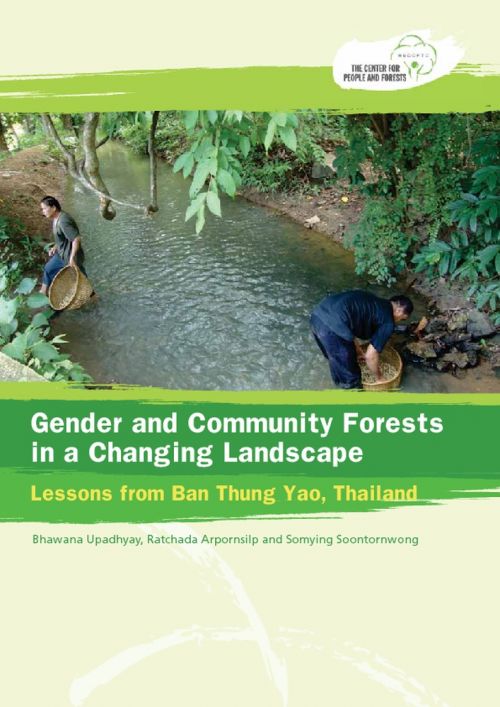APA 6th ed. Gender and Community Forests in a Changing Landscape: Lessons From Ban Thung Yao, Thailand. (2013, August 1). Retrieved from https://www.recoftc.org/publications/0000053
MLA 8th ed. Gender and Community Forests in a Changing Landscape: Lessons From Ban Thung Yao, Thailand. RECOFTC, 1 August 2013, https://www.recoftc.org/publications/0000053.
Chicago 17th ed. RECOFTC. 2013. "Gender and Community Forests in a Changing Landscape: Lessons From Ban Thung Yao, Thailand." Published August 1, 2013. https://www.recoftc.org/publications/0000053.
Gender and Community Forests in a Changing Landscape: Lessons From Ban Thung Yao, Thailand

In the dynamic socio-demographic contexts of the world’s forests and their users, climate change, including climate change mechanisms such as Reducing Emission from Deforestation and Forest Degradation (REDD+), along with energy and food security issues, have brought emerging challenges for women and men in adopting new roles in resource management. Consequently, a renewed focus on the world’s forests and their users is warranted. If gender considerations are taken as a weak link in designing and implementing forest-related interventions and investments, there remains the danger of not only pushing women further toward marginalization, insecurity and despair, but also of forest policies and investment frameworks failing to deliver results on the ground.
This study thus analyzes men’s and women’s specific roles, responsibilities and rights by identifying the levels of participation in using, managing and governing forests and forest resources, in the context of a community forest in Ban Thung Yao village of Northern Thailand. The study highlights gender differential roles, responsibilities, traditional knowledge and wisdom in community forestry, and its influence on resource use and management. The survey also revealed that empowering activities like taking initiatives, being involved in conflict resolution and actively engaging in training, were often undertaken by the men of the community while women were heavily engaged in nominal, passive and consultative process of participation. The study concludes that these attributes should be factored in while developing forest policies and programs, to ensure a fair sharing of benefits, equal rights and sustainability. Finally, the study demonstrates the critical importance of looking beyond gender representation merely in terms of ‘the number of men and women’.

